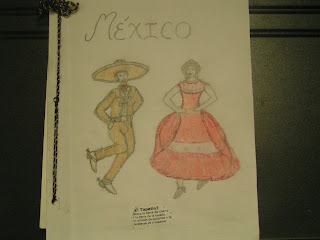
I'm Rosa, I'm 33 years old and born in Mexico. I have 2 kids, Raul (he is 8 years old) and Rosa (she is 3 years old).
I always wanted to be a dancer and remember playing that I was a choreographer/dancer with my brother and sisters. When I was 10 years old, I wanted to study dance but my mother couldn't pay the dancer academy for me, so I had to dance only in school groups or festivals.
I started teaching dance to other children when I was 17 years old and at the same time studied Spanish and folkloric dance education.
I was a professional folkloric dancer when I was 18 years old and traveled across my country and outside of it. The dance company's name was Ballet Folklorico Mexcaltitan.
3 years ago I came to the USA. My friends and I think that our kids need an activity when they learn Mexican tradition and at the same time help them in their education. My friend Susana told me to make a Mexican dance group, and then we asked my English teacher Renee "Can you help us?" and she responded "I can help out." Now we are here with 12 kids dancing in the Migrant Children's Folkloric Ballet.
The class is free and all people are welcome, no importance with race, skin color, or language. Susana and her father Serafin help me in the class. Susana's mother, Angelita and Eloisa made the costumes. Renee (our English teacher) helps us with rhythms and songs.
When I teach dance at the same time I learn that all kids have different learning needs but they can dance, sing, act and in the future they have better skills. The different skills help them in their life.
























